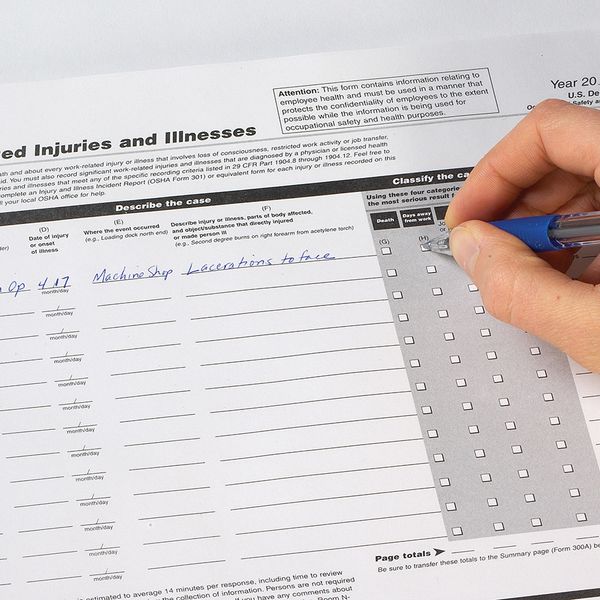OSHA won’t sit on its hands when it finds Part 1904 violations!
In a new OSHA enforcement twist, the agency is not waiting to wrap up an investigation before handing out injury and illness recordkeeping citations. The agency only has a short, six-month window to cite employers for failure to record an incident, and that window begins immediately after the worker injury or illness event, NOT the OSHA inspection date. If an inspection happens months after an injury or illness, that window may be even shorter!
OSHA found a workaround
To remedy this, OSHA discovered a way around the issue. In a recent case, even though the agency has not finished its investigation, OSHA quickly issued 14 recordkeeping citations to a company to ensure the agency did not miss the statutory window. The agency inspected six facilities in five states before handing out the citations, which were for alleged failures to:
- Record injuries and illnesses on the OSHA Form 300 or equivalent per 29 CFR 1904.4(a);
- Properly classify injuries and illnesses on the OSHA Form 300 or equivalent per 1904.7(b)(3) and (b)(4);
- Provide the required injury or illness description on the OSHA Form 300 or equivalent per 1904.29(b)(1);
- Completely fill out an OSHA Form 301 or equivalent for each recordable injury or illness per 1904.29(b)(2);
- Record injuries and illnesses within the required time per 1904.29(b)(3); and
- Provide OSHA with timely injury and illness records upon request per 1904.40(a).
While all the citations were tagged as “other-than-serious” and some were abated during the inspection, none of the penalties exceeded $2,072 per citation. However, once a company is cited for an OSHA violation, any future citations for similar violations may be tagged “repeat,” which means they may come with a penalty of over $145,000 each.
However, what’s new about this enforcement action is that OSHA made it clear that the findings are part of an ongoing investigation at all six locations. In other words, the agency delivered the recordkeeping citations now to ensure they were issued within six months, as federal law requires.
Why are OSHA recordkeeping violations important?
OSHA head Doug Parker explains that when injuries are not recorded properly, the agency’s concern is that “nothing” will be done to keep an injury from recurring at that company. “Solving health and safety problems in the workplace requires injury and illness records to be accurate,” Parker argues.
In fact, the agency has said that this information helps employers, workers, and OSHA evaluate the safety of a workplace, understand industry hazards, and implement worker protections to reduce and eliminate hazards and, thus, prevent future work injuries and illnesses.
Key to remember
While OSHA has a short window to cite employers for recordkeeping violations, it may choose to issue these citations in the middle of an investigation rather than at the end, in order not to miss the window end date. Make sure your injury and illness records are up-to-date.




















































